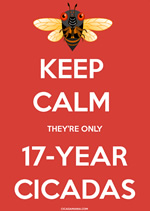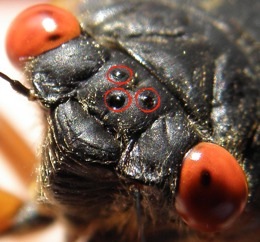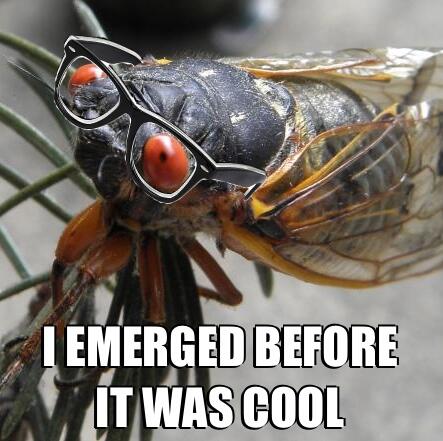
Buy some earplugs so you don't have to say goodbye to a good night's sleep, then read on for some neat 17 year cicada facts, from Dan Mozgai's very cool Cicada Mania website:
They’llRead more over at Dan's website: Here .attackland on you if you’re using a power tool or lawn mower. Cicadas think the sounds made by power tools and lawn maintenance equipment are made by cicadas. They get confused and will land on the people using the equipment!
Cicadas have five eyes: Cicadas have two, obvious, large, compound eyes, and three ocelli. Ocelli are three jewel-like eyes situated between the two main, compound eyes of a cicada. We believe ocelli are used to detect light and darkness. Ocelli means little eyes in Latin.
Cicadas pee: Yes cicadas pee, so wear a hat when walking under trees if that sort of thing bothers you. Cicadas drink tree fluids, and then expell the excess fluid they do now need. People call it “honey dew” or “cicada rain”.
There are billions of them: there are literally billions of 17 year cicadas. Why? One theory suggests that the large number of cicadas overwhelms predators, so predators are never able to eat them all and cicadas, and many always survive to mate. This is a survival strategy called “predator satiation”.
Stragglers: Periodical cicadas that emerge in years before they are supposed to emerge are called stragglers.
17 and 13 are prime numbers. Scientist speculate that one reason why these cicadas emerge in 17 or 13 year cycles is because those are prime numbers. The fact that 13 & 17 are relatively large* prime numbers makes it difficult for predators to synchronize with them. (*Relative to the average lifespan of an animal.) Annual cicadas (cicadas that arrive every year) often have wasps specialized to prey on them; periodical cicadas have no such wasp because no wasp could evolve to synch with it.
17 year and 13 year broods co-emerge every 221 years. Cicada Broods usually don’t overlap geographically, and it is very rare when they emerge in the same year. The next time Brood II (the brood emerging in 2013) will co-emerge with another brood will be in 2115 when it co-emerges with Brood XIX. You might need a time machine to see that happen.



No comments:
Post a Comment